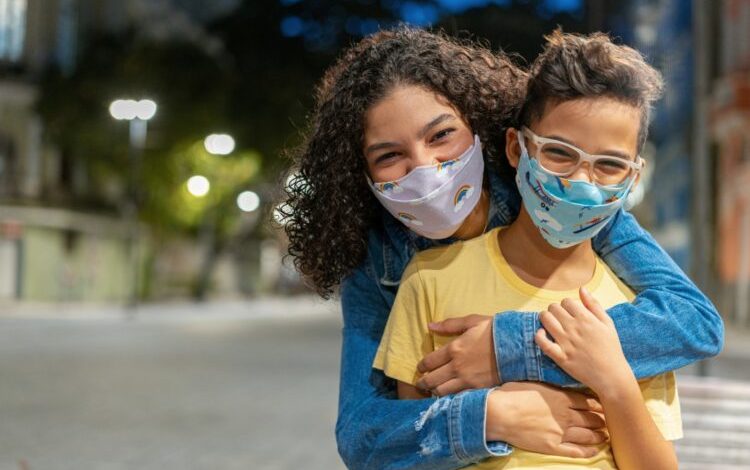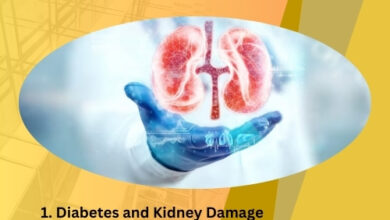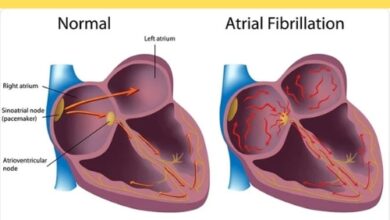NYC COVID cases up 250% in 2 months — and this variant’s harder to duck

A spike in COVID cases in New York may cause people’s summer plans to be derailed.
For around two months, the number of cases has been increasing both nationally and locally. This increase is attributed to the virus’s “FLiRT” variations, which have evolved to evade immunity.
The U.S. Centers for Disease Control and Prevention have loosened their guidelines for the length of time individuals should isolate themselves after becoming ill, and mandatory COVID mitigation measures have been virtually abandoned. However, there are still steps that people can take to keep themselves or others from contracting COVID.
This is information on the most recent COVID-19 pandemic.
How big is the current COVID wave?
According to data from New York City, during the week ending June 22, there were an average of 687 COVID instances reported daily, which is 250% more than the number reported two months earlier. According to city records, there was one death and an average of 53 COVID-related hospitalizations each day that same week, most of which involved older persons.
Public health professionals argue that a drop in testing means that COVID case counts may not accurately reflect the disease burden. Data from state wastewater testing programs suggests that COVID is rising in New York City at a rate that is comparable to that of the previous summer. Nonetheless, the virus is currently significantly less prevalent than it was during a spike last winter.
Experts in infectious diseases claim that COVID is beginning to exhibit a recognizable pattern, with a lesser increase in the summer and a spike in the fall as people gather indoors as the weather cools off.
Summertime brings “family gatherings and weddings,” according to epidemiologist and Columbia Mailman School of Public Health professor Dr. Jessica Justman. Furthermore, “we also spend time indoors when we have a heat wave like we had last week,” even though people are more likely to spend their time outside, where the illness is less likely to spread.
What do we know about the FLiRT variants?
Many people have been vaccinated against the virus or have had prior infections, which have given them some degree of immunity. Although “FLiRT” varieties are able to evade protection, some immunity still seems to lessen symptoms, according to respiratory virus researcher Andrew Pekosz, a professor at the Johns Hopkins Bloomberg School of Public Health.
He continued, “Overall, disease severity is dropping.”
A spike in COVID cases in New York may cause people’s summer plans to be derailed.
For around two months, the number of cases has been increasing both nationally and locally. This increase is attributed to the virus’s “FLiRT” variations, which have evolved to evade immunity.
The U.S. Centers for Disease Control and Prevention have loosened their guidelines for the length of time individuals should isolate themselves after becoming ill, and mandatory COVID mitigation measures have been virtually abandoned. However, there are still steps that people can take to keep themselves or others from contracting COVID.
This is information on the most recent COVID-19 pandemic.
How big is the current COVID wave?
According to data from New York City, during the week ending June 22, there were an average of 687 COVID instances reported daily, which is 250% more than the number reported two months earlier. According to city records, there was one death and an average of 53 COVID-related hospitalizations each day that same week, most of which involved older persons.
Public health professionals argue that a drop in testing means that COVID case counts may not accurately reflect the disease burden. Data from state wastewater testing programs suggests that COVID is rising in New York City at a rate that is comparable to that of the previous summer. Nonetheless, the virus is currently significantly less prevalent than it was during a spike last winter.
Experts in infectious diseases claim that COVID is beginning to exhibit a recognizable pattern, with a lesser increase in the summer and a spike in the fall as people gather indoors as the weather cools off.
Summertime brings “family gatherings and weddings,” according to epidemiologist and Columbia Mailman School of Public Health professor Dr. Jessica Justman. Furthermore, “we also spend time indoors when we have a heat wave like we had last week,” even though people are more likely to spend their time outside, where the illness is less likely to spread.
What is known about the variations of FLiRT?
Many people have been vaccinated against the virus or have had prior infections, which have given them some degree of immunity. Although “FLiRT” varieties are able to evade protection, some immunity still seems to lessen symptoms, according to respiratory virus researcher Andrew Pekosz, a professor at the Johns Hopkins Bloomberg School of Public Health.
He continued, “Overall, disease severity is dropping.”
The current COVID strains that are circulating do not seem to be causing serious sickness in the majority of patients, according to Dr. Aaron Glatt, chief of infectious diseases and chair of the medicine department at Mount Sinai South Nassau.
Regarding the cases he has encountered, Glatt stated, “It’s the typical COVID presentations.” They’re coughing. Some upper respiratory symptoms, such as a cold or runny nose, could be present.
According to Glatt, he has observed more severe situations where patients are having trouble breathing, and he is still worried about elderly patients and those who are generally at a higher risk of developing a serious illness. However, he added that COVID patients no longer frequently require admission to intensive care units.
How do I proceed if I become ill?
The CDC has previously advised those who tested positive for COVID-19 to isolate themselves for a few days. However, in March, it updated that advice to instead concentrate on a specific person’s symptoms in response to a decline in cases and overall illness severity.
According to the most recent recommendations, which include a range of respiratory conditions, sick individuals should avoid contact with others until their symptoms have subsided and they haven’t had a fever for at least 24 hours.
The CDC advises using a mask, maintaining proper hygiene, and avoiding close quarters with others for the first five days following isolation.
The Centers for Disease Control and Prevention (CDC) states that a COVID test can provide a “rough approximation” of an individual’s infectiousness; nonetheless, they recommend that individuals should adhere to the same guidelines whether they have COVID or another respiratory infection.
Those in recovery, according to Glatt, ought to exercise common sense. This includes refraining from seeing elderly relatives or those who are highly susceptible to severe COVID-19.
He continued, “I would definitely let the other people around you know, ‘I recently had COVID,’ when you’re starting to feel better.”
Where can I take a COVID test?
The once-ubiquitous dedicated COVID testing facilities in New York City have mostly vanished. However, tests are still offered by various healthcare practitioners, urgent care facilities, and NYC Health and Hospitals locations.
While many New Yorkers are now more accustomed to reaching for home testing kits, there’s a greater chance that they’ll need to visit the drugstore and spend cash for them. Home testing kits may be covered by insurers, but they are not obligated to do so as of spring 2023, when the federal COVID public health emergency ended. Additionally, the federal program offering free COVID tests has come to an end.
A spokesman for the city’s health department, Patrick Gallahue, stated that the initiative, which gave out over 150 million free quick tests, stopped in March. Prior to that, the city also gave out free kits.
For those who choose to undertake at-home tests, keep in mind that testing positive may not happen for a few days following exposure. Results of home tests can be reported online at this link.
What time should I have my COVID-19 vaccination?
Glatt stated that once a year is probably adequate for most people, despite the fact that the CDC states that those over 65 can receive an updated COVID vaccine every four months.
People who want to get vaccinated should probably wait until revised vaccines are released in a few months, according to Pekosz, as the existing vaccines are not very well-suited to the COVID strains that are circulating.
Since the virus is still evolving, he stated, “this fall’s COVID vaccine will be a better match, although again, it probably won’t be perfect.”




